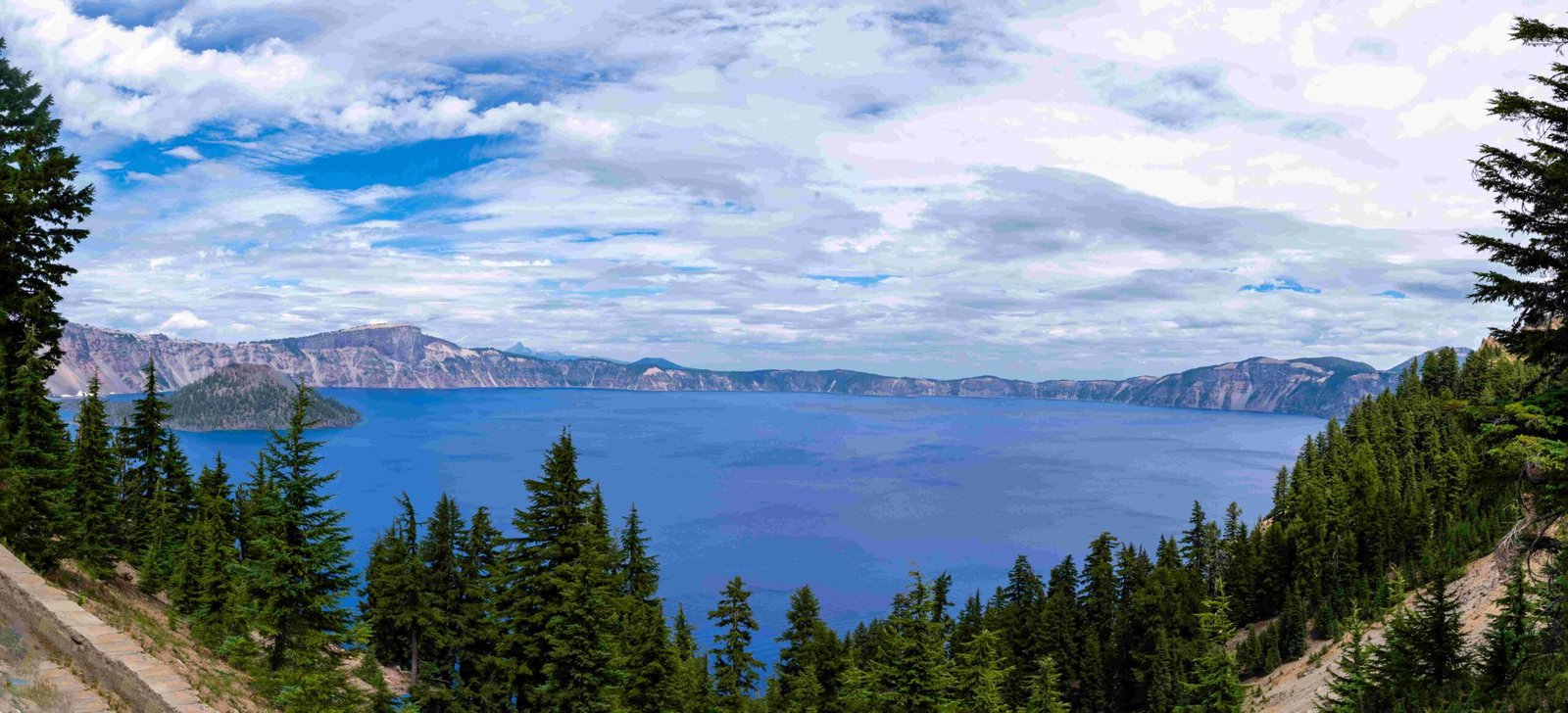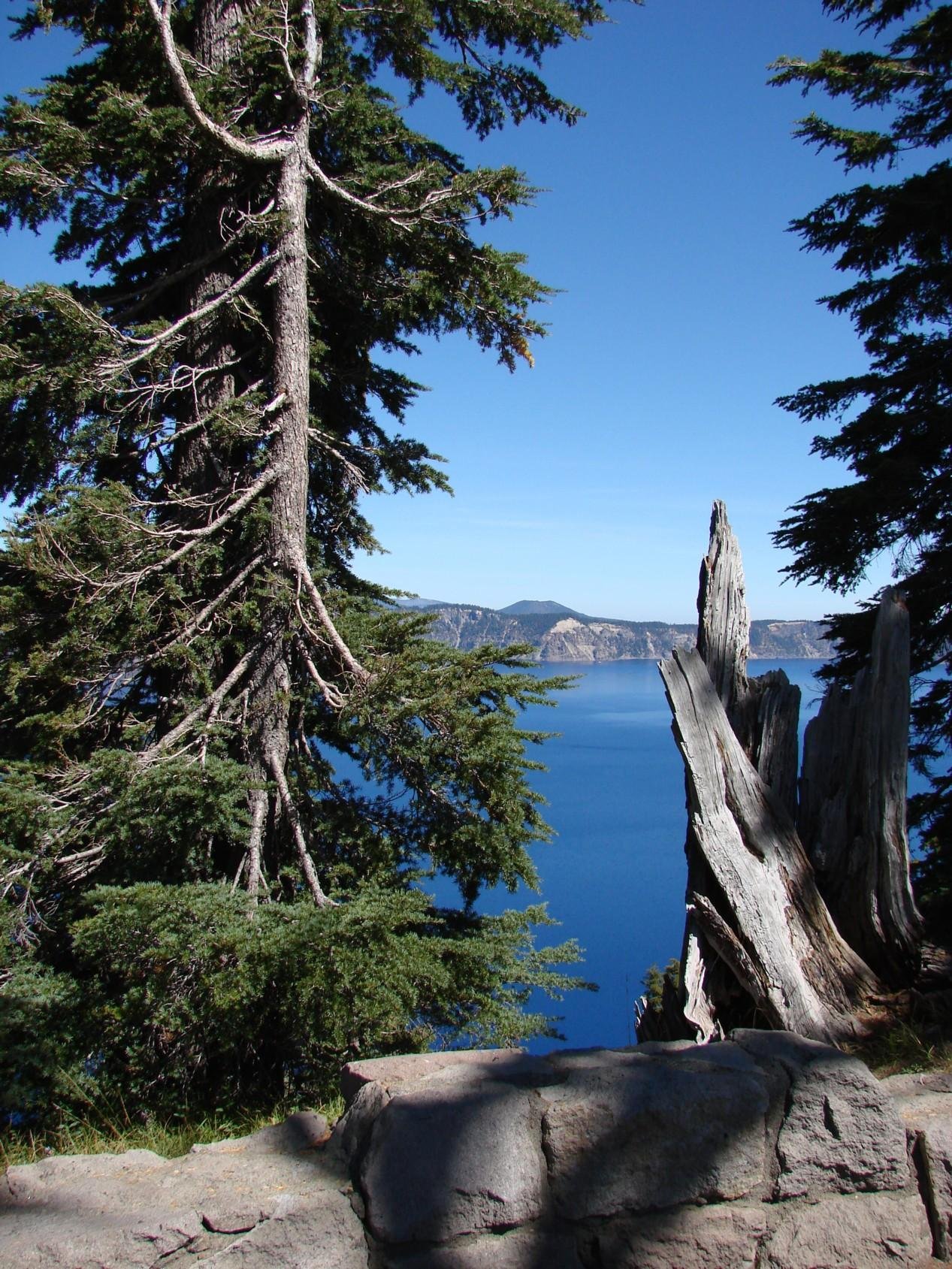Crater Lake, a stunning natural wonder in Oregon, sits atop the remnants of Mount Mazama, a massive volcano that collapsed during a catastrophic eruption about 7,700 years ago. This deep, blue lake occupies a volcanic caldera, forming the deepest lake in the United States. The unique geological history, crystal-clear waters, and surrounding landscape make Crater Lake a captivating destination for visitors and scientists alike.
What is the Geological History of Crater Lake?

The formation of Crater Lake is a testament to the dynamic geological processes that have shaped the Earth’s surface. Mount Mazama, once a towering volcano, underwent a series of events that led to its collapse and the subsequent formation of Crater Lake.
How Did Mount Mazama Form?
Mount Mazama began its life as a composite volcano approximately 400,000 years ago. Over time, it grew through numerous eruptions, building up layers of lava flows and volcanic debris. These eruptions produced various types of volcanic rocks, including:
- Basaltic andesite
- Andesite
- Dacite
- Rhyodacite
At its peak, Mount Mazama stood an impressive 3,700 meters (12,000 feet) above sea level, dominating the landscape of what is now southern Oregon.
What Caused the Catastrophic Eruption?
About 7,700 years ago, Mount Mazama experienced a cataclysmic eruption that would forever change its form. This eruption was triggered by the buildup of pressure in the magma chamber beneath the volcano. The key events of this eruption include:
- Explosive release of volcanic gases and ash
- Ejection of approximately 50 km³ (12 mi³) of magma
- Primarily rhyodacite pumice and ash expelled
- Rapid emptying of the magma chamber
How Did the Caldera Form?
The massive eruption led to the collapse of Mount Mazama’s summit, creating a large caldera. This process occurred relatively quickly, likely over a matter of hours or days. The sequence of events in caldera formation included:
- Evacuation of the magma chamber
- Loss of structural support for the volcano’s summit
- Collapse of the weakened summit into the empty magma chamber
- Partial filling of the caldera with pyroclastic materials and rock debris
What Happened After the Caldera Formation?
Following the main eruption and caldera formation, several important events occurred:
- Smaller eruptions within the caldera built postcaldera volcanoes
- Formation of features like Wizard Island and Merriam Cone
- Gradual filling of the caldera with rain and snow
- Approximately 250 years for the lake to reach its present level
What Makes Crater Lake Unique?

Crater Lake possesses several characteristics that set it apart from other lakes and make it a subject of scientific interest and natural beauty.
How Deep is Crater Lake?
Crater Lake holds the title of the deepest lake in the United States, with some remarkable statistics:
- Maximum depth: 1,943 feet (592 meters)
- Average depth: 1,148 feet (350 meters)
This exceptional depth is a direct result of the caldera’s dimensions and the accumulation of water over thousands of years.
What is the Water Quality of Crater Lake?
The water in Crater Lake is renowned for its purity and clarity. Several factors contribute to this:
- No incoming streams or rivers, reducing sediment input
- Water input primarily from rain and snow
- Limited human activity in the watershed
The clarity of the water allows sunlight to penetrate to great depths, creating stunning blue hues that captivate visitors.
How is the Lake Level Maintained?
The level of Crater Lake is maintained through a delicate balance of natural processes:
| Input | Output |
|---|---|
| Precipitation (rain and snow) | Evaporation |
| Seepage through porous volcanic rock |
This balance ensures that the lake level remains relatively stable over time, with only minor fluctuations due to seasonal changes.
What Can Visitors Experience at Crater Lake?
Crater Lake National Park offers a wide range of experiences for visitors, combining natural beauty with educational opportunities.
What Scenic Views are Available?
Visitors to Crater Lake can enjoy breathtaking views from various vantage points:
- Rim Village: Offers panoramic views of the lake and surrounding caldera
- Rim Drive: A 33-mile scenic road with numerous pullouts and viewpoints
- Watchman Overlook: Provides a stunning view of Wizard Island
What Activities are Offered at Crater Lake?
The park provides a variety of activities for visitors to enjoy:
- Hiking trails of varying difficulty levels
- Boat tours on the lake (seasonal)
- Ranger-led programs and educational talks
- Stargazing events in the summer months
- Winter activities such as cross-country skiing and snowshoeing
How Can Visitors Learn About the Lake’s Geology?
Crater Lake National Park offers several ways for visitors to learn about the area’s unique geology:
- Visitor centers with educational exhibits
- Interpretive signs along trails and viewpoints
- Ranger-led geology talks and walks
- Educational materials available for purchase
What Conservation Efforts Protect Crater Lake?
Preserving the natural beauty and ecological integrity of Crater Lake is a priority for park management and visitors alike.
How is Water Quality Maintained?
Several measures are in place to protect the lake’s exceptional water quality:
- Strict regulations on activities within the watershed
- Monitoring programs to track water quality parameters
- Research projects to understand and mitigate potential threats
What Wildlife Conservation Efforts Exist?
The park is home to diverse wildlife, and conservation efforts include:
- Habitat protection and restoration projects
- Wildlife monitoring and research programs
- Education initiatives to promote responsible wildlife viewing
How Can Visitors Contribute to Conservation?
Visitors can play a role in preserving Crater Lake by:
- Following Leave No Trace principles
- Staying on designated trails
- Properly disposing of waste
- Supporting park conservation programs through donations or volunteering
Crater Lake, atop Mount Mazama in Oregon, stands as a testament to the powerful forces that have shaped our planet. Its volcanic origins, crystal-clear waters, and surrounding ecosystem offer a unique window into Earth’s geological processes and the importance of conservation. As visitors explore this natural wonder, they not only witness breathtaking beauty but also gain a deeper appreciation for the dynamic nature of our planet’s landscape.

